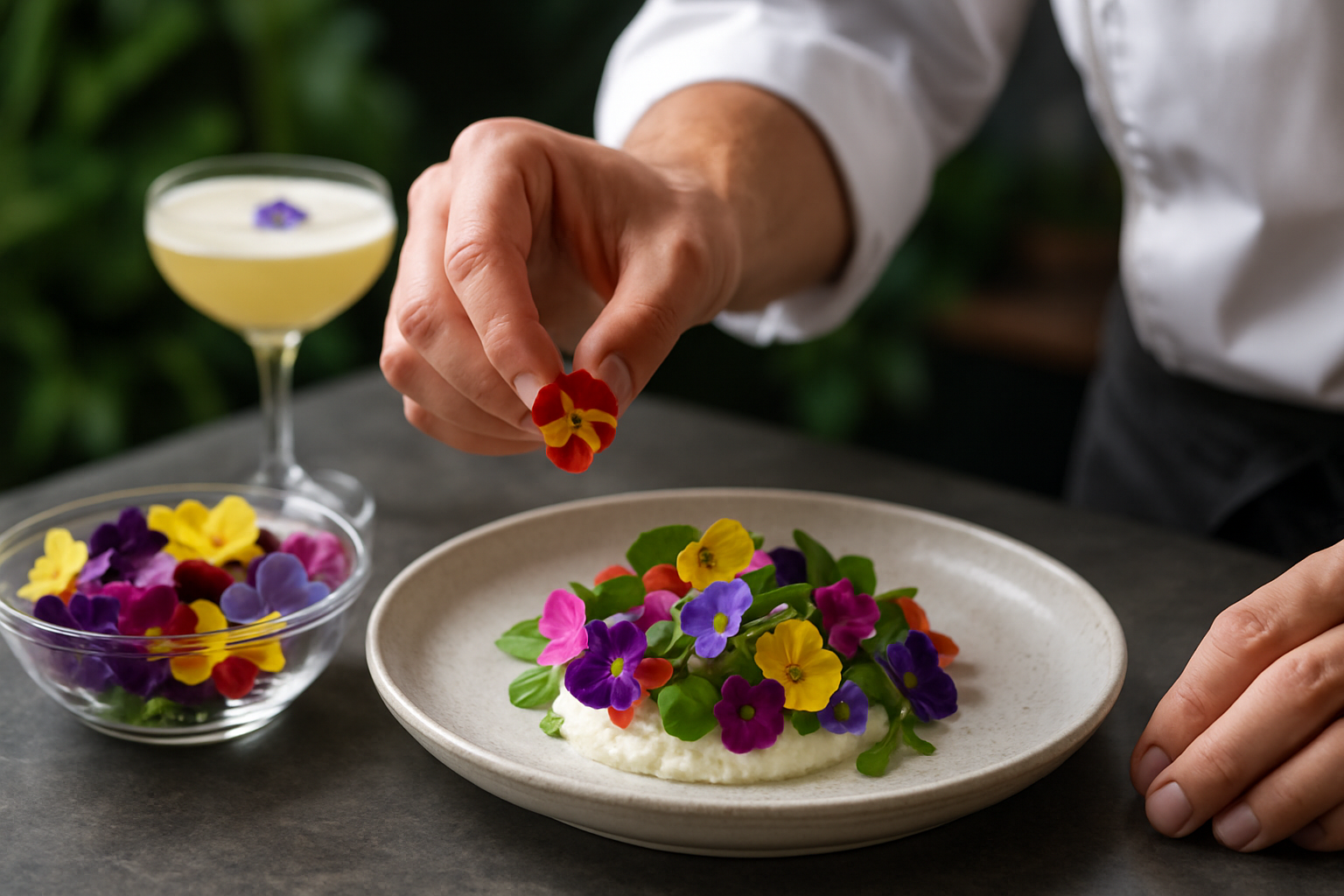Culinary Alchemy: Edible Flowers Bloom on Plates
Delicate petals, vibrant hues, and unexpected flavors are blossoming on plates across the culinary world. Edible flowers are no longer just garnishes; they're becoming star ingredients, transforming dishes into botanical works of art. From cocktails to desserts, these floral wonders are adding a touch of nature's magic to contemporary cuisine, inviting diners to explore a new dimension of taste and aesthetics.

Floral Flavors: A Taste of Nature’s Palette
The world of edible flowers offers a diverse array of flavors, each with its own distinct profile. Lavender brings a soft, perfumed note to desserts and teas, while pansies offer a mild, lettuce-like taste that works well in salads. Borage flowers surprise with their cucumber-like flavor, making them perfect for refreshing summer drinks. Marigolds add a spicy, peppery kick to savory dishes, and rose petals impart a delicate sweetness to everything from jams to ice creams. This variety allows chefs to experiment with flavor combinations that were previously unimaginable. By carefully selecting and pairing floral elements with traditional ingredients, culinary artists are creating dishes that engage all the senses, offering diners a truly immersive eating experience that connects them to the natural world in a unique and memorable way.
From Garden to Plate: Cultivating Culinary Blooms
The farm-to-table movement has found a new ally in edible flowers, with many restaurants and enthusiasts growing their own floral ingredients. This approach ensures freshness and quality while also allowing for experimentation with rare or unusual varieties. Urban gardeners are discovering that many edible flowers can be grown in small spaces, from balconies to windowsills, making it possible for anyone to add a touch of floral flair to their cooking. However, it’s crucial to emphasize the importance of proper identification and sourcing. Not all flowers are safe to eat, and even edible varieties should be grown without pesticides or other harmful chemicals. This focus on cultivation has led to increased awareness about biodiversity and sustainable gardening practices, turning the trend into a gateway for broader conversations about food systems and environmental responsibility.
Blooming Beverages: Floral Infusions in Mixology
The world of mixology has embraced edible flowers with open arms, creating a new category of visually stunning and aromatically complex cocktails. Bartenders are infusing spirits with floral essences, crafting syrups from flower petals, and using whole blooms as dramatic garnishes. Elderflower liqueur has become a staple in many bars, while hibiscus-infused tequila offers a unique twist on classic margaritas. Non-alcoholic options are also getting the floral treatment, with chamomile and lavender teas gaining popularity as sophisticated alternatives to sugary soft drinks. These floral beverages not only look beautiful but also offer a sensory experience that engages smell and taste in harmony. The trend has sparked creativity behind the bar, encouraging mixologists to explore the boundaries between bartending and botany, resulting in drinks that are as much a feast for the eyes as they are for the palate.
The Art of Floral Plating: Aesthetics Meet Flavor
In the age of Instagram-worthy meals, edible flowers have become a go-to tool for chefs looking to create visually stunning presentations. The natural beauty of flowers adds instant appeal to any dish, transforming even simple recipes into works of art. However, the best chefs understand that aesthetics must be balanced with flavor and function. Carefully placed petals can guide the diner’s eye across the plate, creating a visual journey that enhances the eating experience. Texture plays a crucial role as well, with delicate petals offering a contrast to crisp vegetables or tender meats. This artistic approach to plating has elevated food presentation to new heights, encouraging chefs to think like painters, using the plate as their canvas and flowers as their palette. The result is a dining experience that engages all the senses, blurring the lines between culinary craft and fine art.
Blooming Brilliance: Tips for Cooking with Edible Flowers
-
Always ensure flowers are pesticide-free and safe for consumption
-
Start with small amounts to avoid overpowering other flavors
-
Crystallize edible flowers with sugar for beautiful cake decorations
-
Use ice cube trays to freeze flowers in water for decorative drink coolers
-
Experiment with floral-infused oils and vinegars for unique dressings
-
Remember that different parts of the flower may have different flavors
-
Pair floral flavors with complementary ingredients (e.g., lavender with lemon)
-
Consider the season when selecting flowers for your dishes
As the culinary world continues to embrace the beauty and versatility of edible flowers, we’re witnessing a bloom of creativity that’s transforming the dining experience. From enhancing flavors to creating stunning visual presentations, these botanical wonders are proving that nature’s bounty extends far beyond traditional fruits and vegetables. As diners and chefs alike explore this floral frontier, we’re reminded of the endless possibilities that exist when we open our minds—and our palates—to the unexpected delights that surround us. The edible flower trend is more than just a passing fancy; it’s a celebration of nature’s artistry on our plates, inviting us to savor the beauty of each meal with all our senses.




